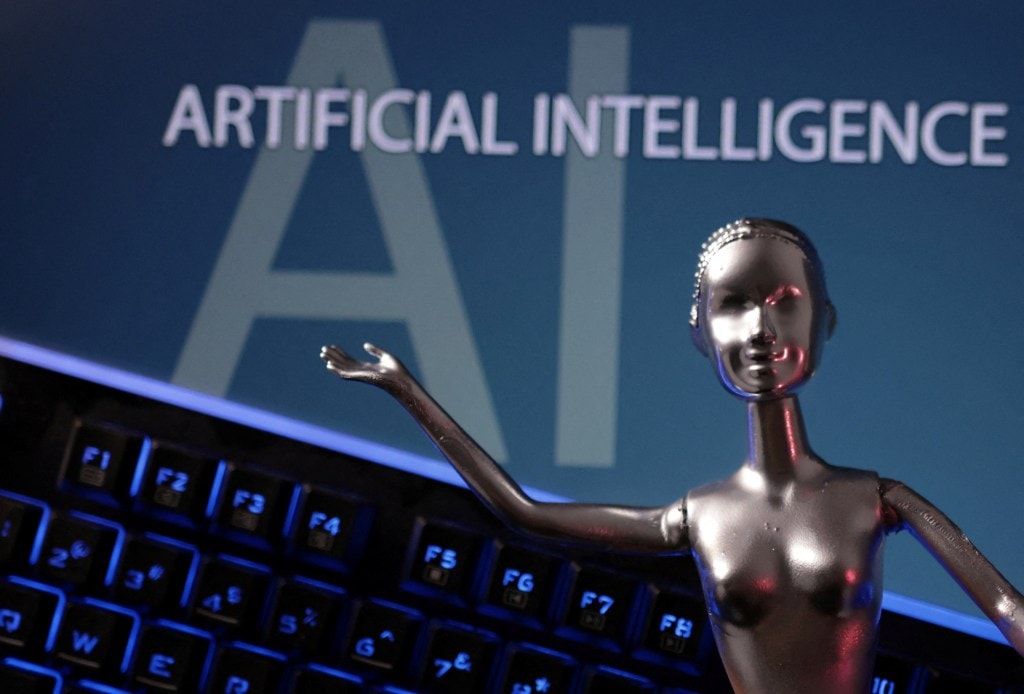– By Nachiket Deshpande
2023 was a watershed moment in AI’s journey to the mainstream. Looking ahead, we may identify 2023 as the pre-and post-GPT revolution threshold. If 2023 was all about commercialization of AI, 2024 will see this trend gain further momentum. Enterprises will take proactive measures this year and craft a substantive AI strategy. This will help them make the most of AI while also keeping an eye on regulatory compliance and new risks.
It’s not just business; AI permeates all facets of our lives, spanning healthcare, finance, and education. AI has the capability to transform education, where children with limited access to schools could have access to personal tutors, and healthcare, where the technology is already helping enhance the quality of patient care. This shift holds significant promise in terms of making healthcare more affordable. The transformative potential extends beyond cost considerations, improving access to healthcare globally. All of this will help humans live longer and healthier lives.
While this super-smart technology has immense potential to reshape economies and societies, the one area that is already seeing significant transformation and disruption is the job market. The International Monetary Fund’s Gen-AI: Artificial Intelligence and the Future of Work report says, “advanced economies will experience the benefits and pitfalls of AI sooner than emerging market and developing economies, largely due to their employment structure focused on cognitive-intensive roles.”
Here are three primary changes that will likely become more noticeable as 2024 progresses.
Knowledge jobs are undergoing a transformation – Generative AI is improving productivity by eliminating mundane elements in jobs, freeing up mental bandwidth for high-value unstructured tasks. According to McKinsey, by 2030, activities that account for up to 30 percent of hours currently worked across the US economy could be automated. Jobs involving knowledge processing, such as summarization of documents and information resolution, are already witnessing significant disruption.
For instance, businesses in the financial sector are leveraging this technology to efficiently analyze and summarize data for analysts, aiding them in presenting crucial information to potential investors in wealth management scenarios. Several large legal firms are also using generative AI to locate and access case law and draft simple contracts. This allows them more time to analyze complex legal issues and advise their clients.
The technology is proving valuable in use cases related to regulatory changes. Organizations are utilizing it to swiftly identify and understand the impact of regulatory shifts, distinguishing between what is relevant and what is not. This application is particularly crucial in scenarios where synthesizing information traditionally took weeks or even months. The technology is now streamlining this process, making it possible to obtain insights in minutes and, in some instances, seconds.
This necessitates a new approach to productivity and the importance of equipping people with the necessary skills to harness AI’s benefits while managing its risks.
Traditional distinction between creative roles and technology jobs is fast fading – The field of creativity and content creation is evolving, encompassing videos, images, specifications, and more, alongside technology. Today, there is a clear transition towards roles centered on ideas, empowered by AI’s capacity to elevate job functions to more abstract levels.
This integration is impacting various industries, where the conventional separation between creative roles and technology jobs is gradually diminishing. In the past, there were distinct roles for creative individuals and technology experts. However, there’s a noticeable shift towards adopting, mainstreaming, and scaling innovative content creation techniques, blurring the lines between creativity and technology.
While promising, this evolution comes with its challenges, including corporate hurdles and controversies surrounding ethical considerations in technology integration. Despite the challenges, the trend indicates a move towards more jobs adopting a technology-centric focus. This also indicates a substantial shift of focus on reskilling as an essential for capitalizing on AI’s benefits.
Speed at which enterprises transform and innovate will get shorter – According to Gartner, by 2026, more than 80% of enterprises will have used generative AI APIs and models and/or deployed Gen AI-enabled applications in production environments, up from less than 5% in 2023. This demonstrates how swiftly the generative AI wave is advancing. If AI has managed to create a superpower, then it is speed. Organizations will no longer run such long-drawn programs. The geopolitical, economic, and technological shifts have ushered in the ‘age of perpetual organizational upheaval.’ In navigating this landscape, the right AI strategy becomes paramount, enabling organizations to scale and pivot swiftly to react and predict disruptions in advance. With these shifts, the era of long-drawn technology transformations is fading. While there may still be some large-scale transformation programs spanning 18 months and involving significant spending, this trend is also evolving with AI. Organizations are increasingly veering away from such prolonged programs.
The world over, business leaders are betting big and are bullish on AI, and in particular generative AI. Advances in technology have the potential to help us solve global challenges, but innovation and guardrails are essential. Amidst this din, it’s crucial not to overlook the importance of responsible and sustainable utilization of this technology, ensuring its ethical and beneficial integration into business and society.
(Nachiket Deshpande is the COO of LTIMindtree.)
(Disclaimer: Views expressed are personal and do not reflect the official position or policy of Financial Express Online. Reproducing this content without permission is prohibited.)

